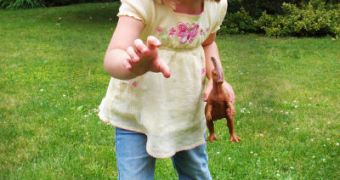According to a new scientific study, it may be that the sound of approaching footsteps makes us more efficient at seeing in the dark. The process of boosting the visual acuity takes place even before we can consciously make out the sounds, a team of scientists from the University of Glasgow reports. The experts hypothesize that this may be an evolved defense mechanism, aimed at allowing people to make out if someone is following them in the dark.
The team reveals that the adaptation is so sudden that, by the time we turn around to investigate the source of the noise, our vision is already boosted to some extent. In their experiments, the scientists asked 15 volunteers to listen to a number of sounds, some of which were gradually increasing in volume, as if approaching. Other sounds were made to appear as if they were receding, while a third category appeared to be stationary, NewScientist reports.
The investigation revealed that all the participants were extremely responsive to “looming signals” and that the levels of activity in the visual cortex spiked even before the participants consciously heard the sounds. While the sounds were playing, the experts used transcranial magnetic stimulation (TMS) to stimulate the visual area of the brain, located at the back of the skull. The technique employs weak electrical currents, which stimulate neurons and, in the case of the visual region, make people see phosphenes – illusory spots of light.
The trick behind using TMS was that the number and intensity of phosphenes were directly proportional to the sensitivity of the visual cortex. Therefore, if the participants' visual acuity increased, they saw more of the light flashes. All of the sounds created phosphenes, but the looming and approaching ones by far caused the most. “The visual cortex is responding to non-visual stimuli,” UG expert Vincenzo Romei, the leader of the research team, says.
“Auditory processing is faster than visual processing, so if the brain gets an auditory signal first, it will be likely to influence the interpretation of subsequent incoming stimuli. Think of how film music sets a scene's mood, even when the screen is dark,” University College London expert Vincent Walsh, who has not been part of the new study, agrees.

 14 DAY TRIAL //
14 DAY TRIAL //